Your Ultimate Guide to Burrata (And How Not to Mess It Up)
I’ll never forget the first time I really got burrata. It wasn’t served on some fancy plate in a restaurant. I was in a tiny kitchen in southern Italy, and an old cheesemaker—a casaro—handed me a pouch of it, still cool from the whey it was resting in. He didn’t hand me a knife. He just gestured for me to break it open. The second the thin mozzarella skin tore, this incredible river of creamy, stringy cheese just flowed out. That moment taught me something fundamental: burrata isn’t just a cheese. It’s an event. It’s all about texture and respecting the craft that goes into it.
In this article
For years, I’ve seen people treat burrata like it’s just a regular ball of fresh mozzarella. They slice it up neatly, serve it ice-cold from the fridge, or—and this is the worst one—they try to cook with it. Honestly, it kind of breaks my heart because they’re missing the entire point. So, this isn’t about giving you a bunch of complicated recipes. It’s about showing you how to honor this unique cheese and let it be the absolute star it’s meant to be.
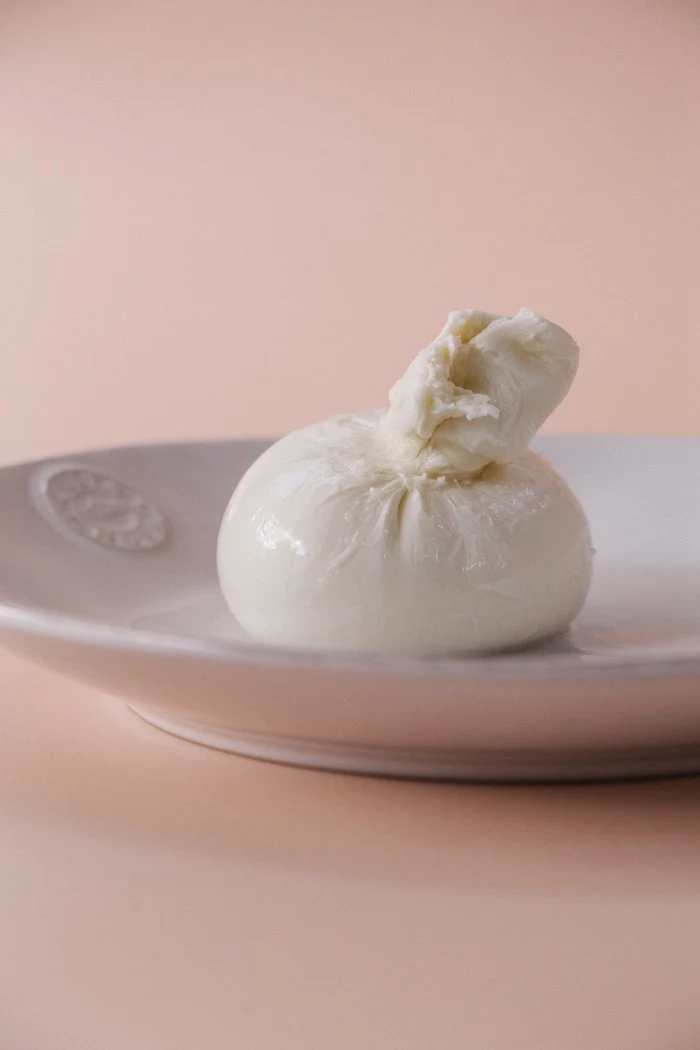
What Even Is Burrata? More Than Just a Cream-Filled Ball
To really appreciate burrata, you have to know how it’s made. It uses a technique for stretched-curd cheeses, where the magic happens with hot water and a lot of skill. Think of it as a story of two textures born from the exact same starting point.
It all begins with super fresh milk, which is gently heated and cultured to develop a bit of acidity. Then, rennet is added to form a soft curd. So far, pretty standard cheesemaking. But here’s where it gets interesting. That curd is cut up, drained, and then drenched in very hot water. This doesn’t cook the curd; it plasticizes it, allowing the cheesemakers to stretch it by hand. This stretching process is what aligns all the proteins and creates that signature stringy, layered texture of fresh mozzarella.
The real genius of burrata is what they do next. A portion of this freshly stretched mozzarella is pulled apart into little shreds, or “rags.” These shreds are then mixed with high-quality fresh cream. This heavenly mixture is called stracciatella, which literally means “little rags.”
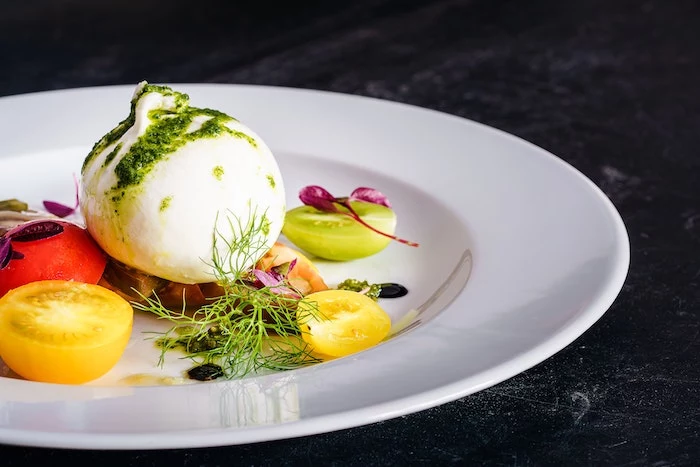
Oh yeah, fun fact: the word “stracciatella” pops up elsewhere in Italian food, like in a gelato flavor with chocolate shavings and a type of egg-drop soup. It always refers to that ‘shredded’ or ‘torn-apart’ look. It’s a useful word to know!
Meanwhile, another piece of the warm, pliable mozzarella is formed into a hollow pouch. This pouch is then filled with that creamy stracciatella, and the top is pinched shut to seal the deal. The finished ball is plunged into cold water to set the outer shell, locking in that incredible contrast: a solid, springy mozzarella exterior protecting a luscious, liquidy, and rich interior.
Your Guide to Buying the Good Stuff
Not all burrata is created equal, and what you buy will make a huge difference. Your relationship with a good cheese counter or importer is key, but here’s what to look for when you’re on your own.
The Gold Standard: PGI-Certified
If you want the real-deal, traditional experience, look for the yellow and blue “PGI” (Protected Geographical Indication) seal. This is a certification that guarantees the cheese was made in its specific home region in Italy using time-honored methods. The shell is often slightly thicker and has a more distinct, grassy milk flavor. Be prepared to spend a bit more for this quality—usually somewhere between $12 and $18 for an 8-ounce ball. It’s a luxury, but worth it for a special occasion.
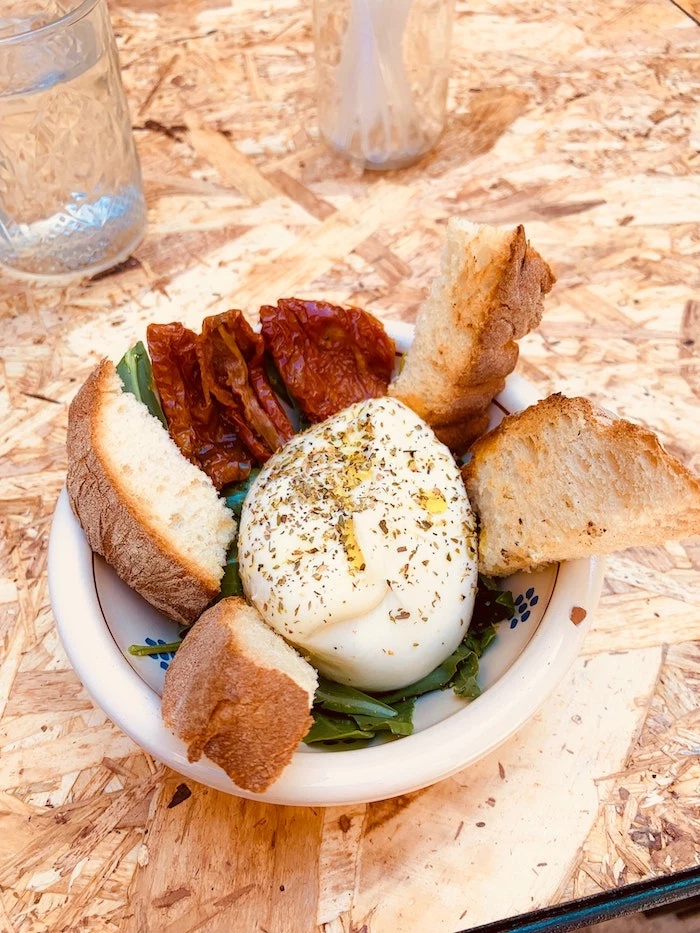
Excellent American-Made Options
Let’s be real, you don’t always need to import. Some fantastic cheesemakers are producing incredible burrata right here in the US. Brands like Di Stefano or Belgioioso are widely available and make a very reliable and delicious product. Their shells are often a bit more delicate, and the flavor is clean, fresh, and milky. These are my go-to for weeknight dinners or casual salads and usually run about $8 to $12 at grocery stores like Whole Foods or local cheese shops.
The Backup Plan: Just Stracciatella
Sometimes you might find tubs of just the filling—the stracciatella—sold on its own. If you can’t find a whole burrata, this is an amazing plan B! You miss out on the fun ‘reveal’ of breaking the pouch, but you still get all that creamy, shredded goodness. It’s perfect for spooning over warm toast, swirling into a tomato soup just before serving, or mixing into pasta.
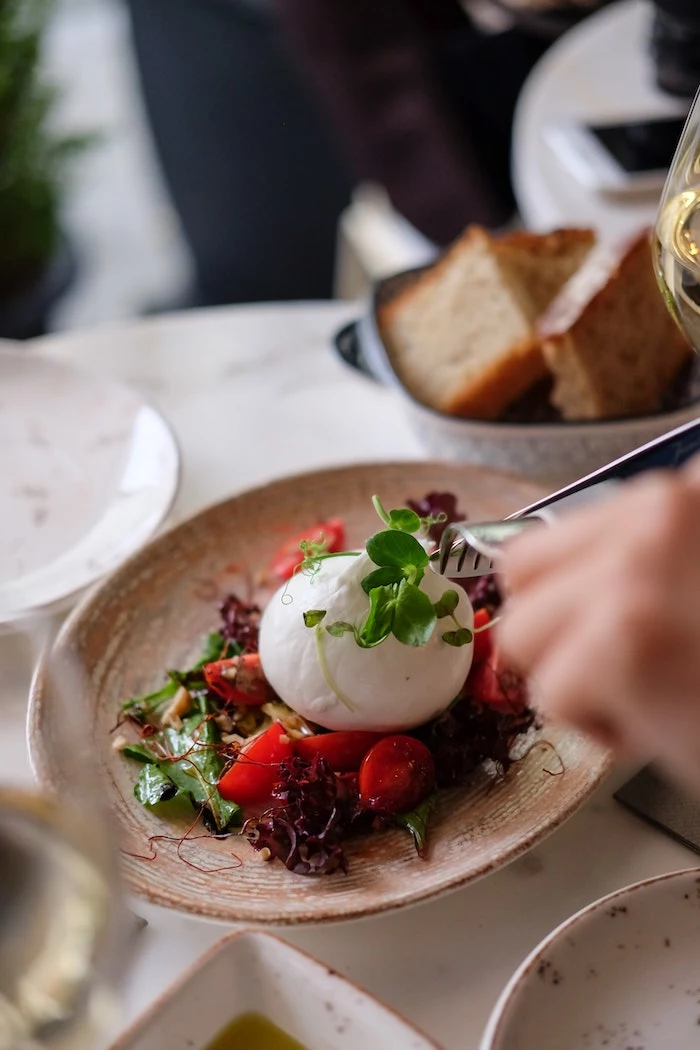
How to Handle and Serve Burrata (The Rules You Can’t Break)
Once you get it home, you’re on the clock. This is a fresh, fragile cheese.
First, always store it in its original container and liquid in the coldest part of your fridge (usually the back of the bottom shelf). And whatever you do, DO NOT freeze it. It will completely ruin the texture, making it grainy and watery when it thaws. A total disaster.
The Most Important Rule: The 30-Minute Wait
I cannot stress this enough. The biggest mistake you can make is serving burrata straight from the fridge. The cold mutes all the flavor and seizes up the fat in the cream. You lose everything that makes it special.
About 20 to 30 minutes before you serve it, take the burrata out of the fridge. Let it sit on the counter—still in its sealed container and liquid—to gently come to room temperature. This one simple step will make it taste a million times better. Seriously, it’s a total game-changer.
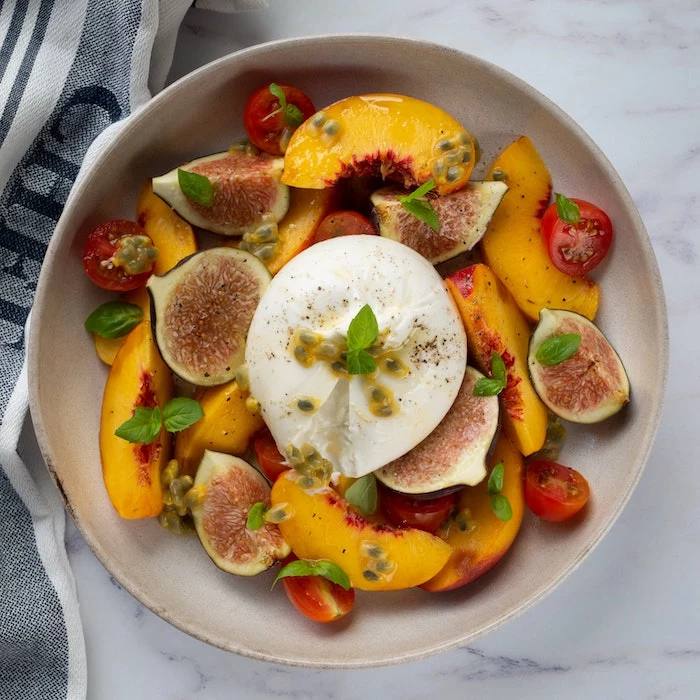
Quick Tip: In a rush? We’ve all been there. If you forgot to take it out, you can place the sealed container in a bowl of lukewarm (NEVER hot!) water for about 10-15 minutes to take the chill off faster.
To Cut or to Tear?
Put the knife away. Slicing burrata into neat wedges ruins the whole experience! The best way to serve it is to place the whole ball on a plate or on top of your dish. Then, at the table, use a fork and spoon to gently tear it open. This creates that dramatic, beautiful moment when the creamy stracciatella spills out. It’s not just for show; it ensures every bite gets a perfect mix of the firm shell and the rich filling.
As for serving size, for an appetizer or salad, I usually plan on about half of a standard 4-ounce ball per person. If it’s the main event of the cheese board, maybe a whole one for two people to share.
A Foolproof Recipe for Your First Time
The beauty of burrata is that it needs very little help. The goal is to complement it, not overpower it.
Here is the simplest, most perfect way to serve it:
1. Start with a room-temperature ball of burrata (remember the 30-minute rule!). 2. Place it on a platter. Surround it with a pint of ripe cherry tomatoes, halved, or a few slices of a juicy heirloom tomato. 3. Drizzle everything generously with a high-quality extra virgin olive oil—choose one that’s more fruity than peppery. 4. Sprinkle with flaky sea salt (like Maldon) and a few grinds of fresh black pepper. 5. Serve immediately with crusty bread or crackers for mopping up every last bit of cream.
That’s it! From there, you can get creative. It’s fantastic with prosciutto, grilled peaches or zucchini, or a dollop of fresh basil pesto.
Using Burrata in Hot Dishes: The Golden Rule
This is where people get into trouble. Burrata is a FINISHING ingredient, not a cooking ingredient.
Applying direct heat destroys it. The cream breaks, the shell gets oily, and you lose that amazing textural contrast. So please, always add it at the very end.
- On Pizza: Bake your pizza first. Once it’s out of the oven and slightly cooled, tear the burrata over the top. The residual heat will warm it through perfectly.
- With Pasta: Toss your pasta with its sauce, plate it, and then place the burrata on top. Break it open and let the stracciatella become a luxurious, no-cook cream sauce.
A Final Word on Safety
Trust your senses. Fresh cheese doesn’t last long. If the liquid in the container looks yellow or cloudy, or if the cheese smells even slightly sour or ‘off,’ just throw it away. It’s not worth the risk. A good burrata should smell clean and milky. Once you open it, try to use it within 24-48 hours. After that, it starts to lose its magic.
In the end, this cheese is a simple, incredible pleasure. Treat it right, and it will reward you every single time.
Inspirational Gallery
The name ‘burrata’ literally means ‘buttered’ in Italian, a nod to the rich, creamy texture of its stracciatella filling.
The Temperature Rule: Never serve burrata straight from the refrigerator. Its magic lies in the contrast between the delicate skin and the luscious, flowing interior. For the perfect texture and flavor, take it out of the fridge at least 30 minutes before serving. This allows the cream and mozzarella shreds to soften, ensuring that glorious ‘river’ of cream the moment it’s broken open.
The liquid your burrata is packed in isn’t just water; it’s often the whey from the cheesemaking process, lightly salted. Don’t discard it immediately! While you shouldn’t let the burrata sit in it for days, this brine is what keeps the outer shell moist and flavorful until the moment you’re ready to serve it. It’s a sign of a traditional, well-packaged product.
Think beyond the classic tomato and basil pairing. Burrata’s creamy, mild flavor is a perfect canvas for other tastes:
- Sweet & Salty: Drape it with paper-thin slices of Prosciutto di Parma and serve alongside fresh figs or grilled peaches.
- Earthy & Rich: A drizzle of high-quality truffle honey or oil over the burrata, served with toasted sourdough.
- Vibrant & Zesty: Top with a gremolata made of finely chopped parsley, lemon zest, and garlic.
According to the consortium for ‘Burrata di Andria IGP,’ authentic burrata must be produced in a specific region of Puglia and tied with raffia or a green ribbon, a traditional sign of freshness.
This IGP (Protected Geographical Indication) status is your guarantee of quality. It means the cheese was crafted following strict, traditional methods in its birthplace. When you see this label, you’re not just buying cheese; you’re buying a piece of authentic Italian culinary heritage.
What’s the best wine to serve with burrata?
You need a wine that complements, not overpowers, the cheese’s delicate creaminess. Avoid heavy, oaky reds. Instead, opt for a crisp, dry white like a Pinot Grigio or a Vermentino. A dry Italian Prosecco is also a fantastic choice, as its bubbles cut through the richness beautifully. For a rosé, look for a light, Provencal-style one.
Burrata vs. Mozzarella di Bufala: Both are Italian fresh cheeses, but they are worlds apart. Mozzarella di Bufala, made from water buffalo milk, has a springy, slightly tangy, and milky flavor throughout. It’s perfect for slicing.
Burrata: This is a cow’s milk mozzarella pouch filled with cream-soaked mozzarella shreds (stracciatella). The experience is all about the textural surprise—a solid exterior giving way to a liquid center. It should be broken or torn, not sliced.
Ultimately, one isn’t better than the other, they just serve different culinary purposes.
- A perfectly soft, yielding outer skin.
- An interior that flows generously without being watery.
- A flavor that’s milky-sweet with a hint of fresh cream.
The secret? Look for hyper-freshness. Burrata is best consumed within 48 hours of being made. Always check the production date. A great burrata should feel heavy for its size and have a clean, bright white color. Any sour smell or a tough, rubbery skin means it’s past its prime.
Create a ‘Burrata Board’ as a stunning centerpiece for your next gathering. Place a large, beautiful burrata (like one from an artisanal producer such as Di Stefano Cheese) in the middle of a platter. Instead of pre-cutting it, leave it whole with a small spreader. Surround it with complementary textures and flavors: salty Castelvetrano olives, sweet fig jam, crunchy Marcona almonds, roasted red peppers, and a variety of artisanal crackers or toasted bread. It’s an interactive and unforgettable way to enjoy the cheese.










